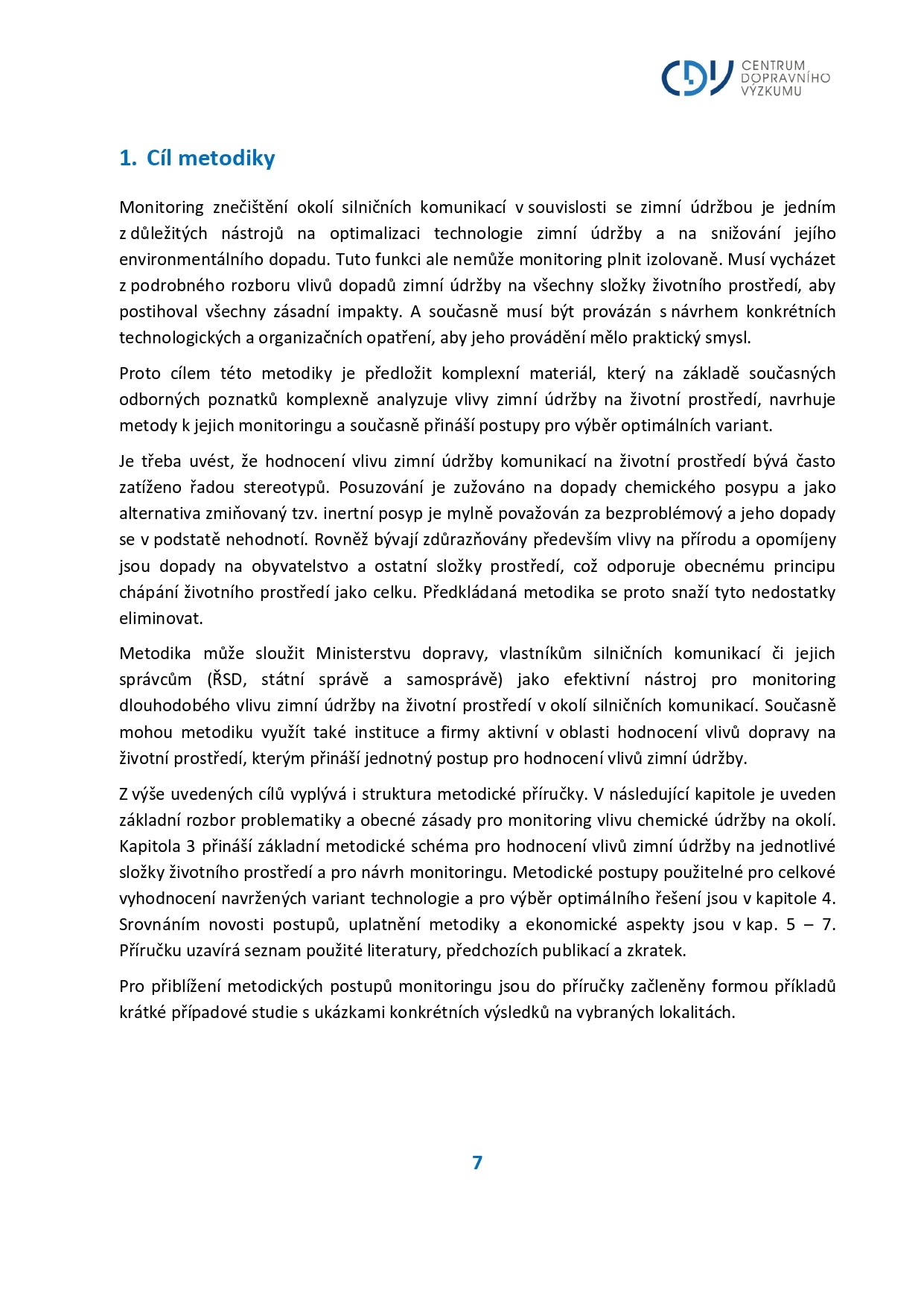E-book
Monitoring of pollution around roads in connection with winter maintenance of transport infrastructure
Monitoring of pollution around roads in connection with winter maintenance of transport infrastructure
Couldn't load pickup availability
When assessing the environmental impacts of chemical maintenance options, in principle, methodological (not procedural) approaches can be based on environmental impact assessment (EIA) approaches according to Act No. 100/2001 Coll. as amended. The basic approach is the assessment of direct impacts that the project will have on the directly affected environmental components. This also includes obvious indirect impacts that occur in other locations in connection with the evaluated project. The fundamental fact is that it is necessary to assess the impact on all environmental components and only on the basis of a comprehensive assessment to decide on overall acceptability. All real options, including the zero option, must be assessed and compared with each other. From a technological perspective, there are two basic approaches: chemical and inert sanding (and their combinations).
The methodology provides a general analysis of the impacts on individual components of the environment, including practical examples as described in the EIA Act. Factors that support or, conversely, hinder the application of the relevant procedure are always listed. The methodology also contains a proposal for methodological steps for overall decision-making on the optimal variant.








Detail
Author
- Ličbinský R.
- Angel P.
- Hegrová J.
- Stulířová J.
Content
1. Objective of the methodology
2. Basic analysis of the issue
3. Methodological part
3.1. General principles of winter maintenance monitoring
3.2. Impact on the population
3.3. Impact on the noise situation
3.4. Impact on the atmosphere
3.5. Impact on water
3.6. Impact on the soil and rock environment
3.7. Impact on flora, fauna and ecosystems
3.8. Impact on the landscape
3.9. Impact on archaeological and cultural monuments
4. Procedure for deciding on winter maintenance options
4.1. Main principles when deciding on winter maintenance options
4.2. Methodological tools for the decision-making process
í acceptability of chemical winter maintenance
5. Comparison of the novelty of procedures
5.1. Current state of knowledge in professional literature
5.2. Overview of foreign trends in the use of sprinkling materials
6. Description of the application of the certified methodology
7. Economic aspects
Dedication
The methodology was created with the state support of the Ministry of Education, Youth and Sports within the framework of the National Sustainability Program I, project Transport Research and Development Center (LO1610).
Colophon
ISBN 978-80-88655-41-1 (online; pdf)
Year of publication
2025







